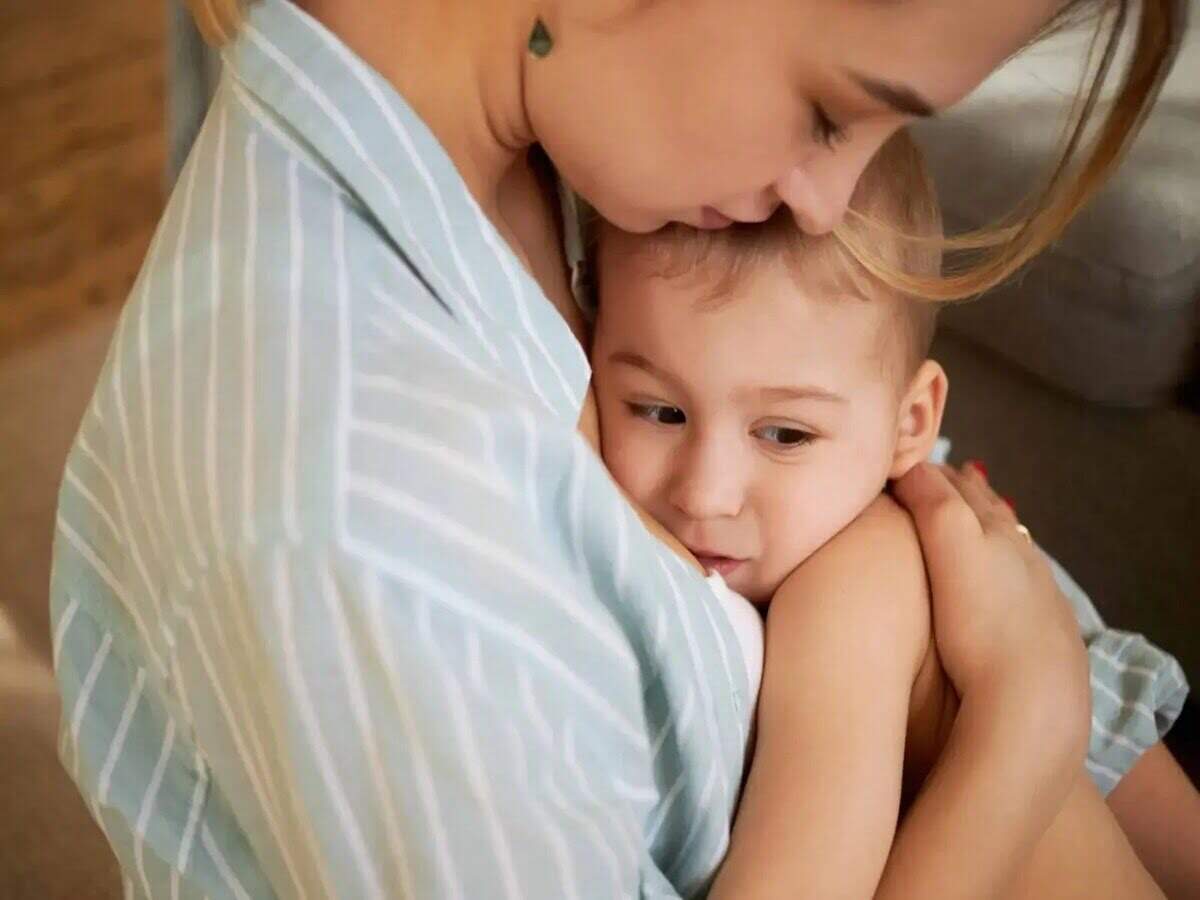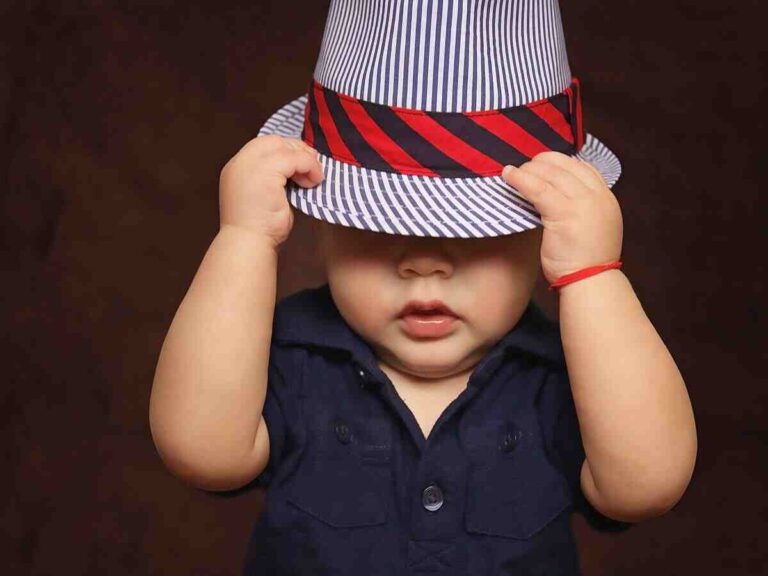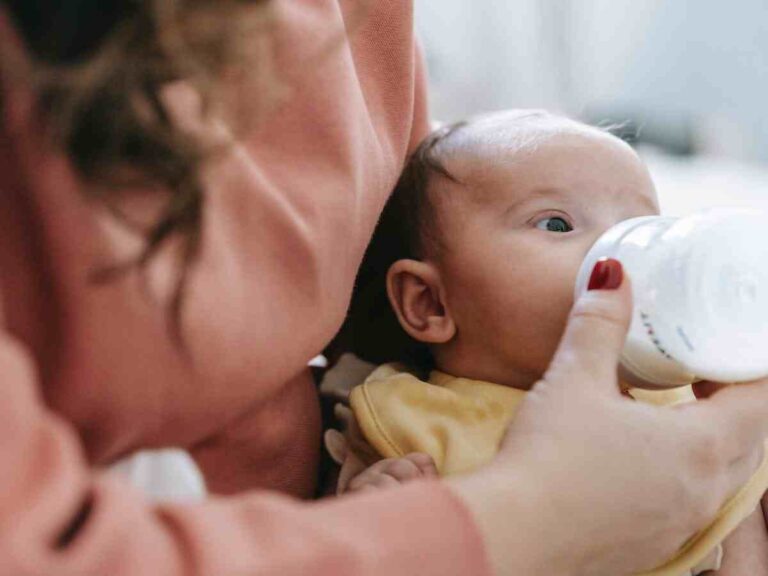Sometimes, in the middle of the night, often you find your infant crying and wonder how to stop it immediately? The news of a newborn coming to the family is a moment of great joy for the entire family members. For parents too, this news is a pleasant surprise and excitement unfolding day by day. All family members eagerly wait for the final moment when they can actually welcome the baby home.
And finally, the day comes when happiness is showered on the family. It is a special day for them to get an extension of the family. The good thing for a family with elders is that they know all the good baby care tips and how to calm the baby whenever a situation arises.
The newborn brings with it all hope and refreshment into the lives of the entire family. However, for parents, these are the most testing times of their lives. It is they who are more involved in the caretaking than anybody else in the family. The initial years in the life of the baby are the most crucial.
Likewise, the responsibilities of the parents are also manifold. Especially, for the mother the responsibilities are tremendous. Most of the time, her own personal life takes a toll in these delicate years of the baby. Here we will discuss how to tackle infant crying which is one of the foremost challenging tasks in front of a new mom.

For parents, the challenge is infant crying
Calming a restless baby is the most challenging task for the parents. In fact, the first three months are the most difficult for the baby and equally taxing for the parents. For baby because it has just entered into a new world, outside a secure mother’s womb and coming to terms with the changing environment.
Similarly, for parents, these are the most difficult and demanding times. The baby needs the care and observation of the parents who should know how to handle the situation of infant crying.
One of the most common situations faced by all parents is that they have to cope with a restless, crying and disturbed baby. No matter how much you care, these situations do arise, however, the severity is different for different babies. We need to understand that the baby is disturbed or restless when crying profusely. We will also learn how to handle infant crying in these circumstances and what can be done in different situations. Some of the reasons why the baby is disturbed or restless are discussed below:
The tiredness of the baby
In most cases, the baby gets tired when it does not get adequate sleep or is awake than the normal tolerance levels. This makes it more difficult for the baby to get sleep because by that time the stress has already increased. This stress triggers hormones like cortisol which makes it more and more difficult once the sleep time is over.
Therefore, being awake beyond the tolerance level of the baby, or if the baby is overstimulated for too long gives rise to tiredness. And once this awakeness is beyond the schedule, the cycle of sleeplessness repeats and hence results in more tiredness in the baby. This results in frequent ingant crying and yelling by the baby and the mother wonders what to do, which at times can happen in the middle of the night too.
Symptoms
A tired baby may rub its eyes, yawn or cry unnecessarily. All this is related to the tiredness of the baby and will keep the baby awake further. It is not necessary that you always keep the baby in your arms and swindle or move it continuously for inducing sleep. It interferes with the baby’s own mechanism of self-inducing sleep. Constant rocking or swindling and vigorous movements will be counterproductive and may not deliver the desired result in cases of infant crying at this juncture.
Remedy for infant crying:
- Try to stick to the sleep schedule of the baby.
- Try to relax the baby but do not push yourself. Allow it to express itself.
- Switch off all the lights and electronic gadgetry in the room where the baby is.
- Swaddle your baby and try to keep it protected and warm.
- You can try moving the arms a little so the baby gets rocked.
- Make sure that the baby gets adequate sleep in 24 hours which is at least 14 to 18 hours
- Try to break the sleep schedule of 8-9 hours at night and 7-9 hours during the day.
- Don’t overstimulate the baby when sleep time is near. Relax it to induce sleep.
Trapped winds in the baby’s stomach
The baby gets restless when it swallows some of the air into the stomach, during the feeding process. It happens when the baby gulps too much milk in a rush. Generally, it is said that bottle-fed babies get the wind trapped more often than breastfed babies. Bottle-fed babies swallow the air inside them which is sometimes present in the bottle, while breastfed babies have somewhat better control over it and can swallow more slowly.
However, it is not a very hard and fast rule and this problem may be seen in both cases. The trapped air inside the baby’s stomach causes it to feel restless and it makes the baby uncomfortable till the time the air remains inside the baby. Sometimes due to the crying of the baby, some air makes its way to the stomach of the baby. The parents should know what to do in the situations of infant crying at these junctures.
Symptoms
The baby may cry and may have a bloating stomach, which will make it painful for the baby. Flatulence may also be a symptom and the baby may also bring the milk upwards from the mouth after feeding. This means that the milk is not properly digested and the trapped wind inside is hindering the digestive process. The baby may also refuse to take milk as it is uncomfortable due to pain in the stomach. It may also bend the limbs towards the stomach indicating clearly where the problem lies.
Remedy for infant crying
- You can take the baby in your arms and let the baby’s head be rested on your shoulders and wait for the burp.
- Try to keep the baby in an upright position so that the windpipe is straight enough for the gas to pass.
- You can try to gently massage the stomach area of the baby for relaxation.
- Lay the baby on its back and manually move its legs in a cyclic motion while applying pressure on the stomach
- Try the gripe water which is a mix of sodium bicarbonate and herbs, after consultation with the pediatrician.
- Try to burp the baby after each feed either through bottle or breast, so that any trapped air escapes.
- You can try to make the baby sit on your lap facing the opposite side and pat it on its back gently.
- Also, try to lay the baby on its stomach facing down on your lap and rub its back gently for a burp.
Noisy surroundings and how to tackle infant crying
The baby is sometimes irritated because of some noise in the background. The sounds that the baby is usually not used to, especially when it is time for sleep. Ideally, the baby needs to be placed in a room, where there is the least amount of noise that can affect the baby. The baby has delicate ears and any noise which is beyond its hearing capacity can irritate or disturb it. Moreover, noise can harm the development of the ear of the baby.
The sound of traffic, loud running sounds of television or music system, repair works at home, the sound of aeroplanes, etc are all sounds that can irritate the baby and cause it to cry. The loud noise at this time may have an impact on memory, speech or the baby’s learning skills later on. Besides also, prolonged exposure of the baby to the noise can have an adverse effect on its eardrums.
Also, prolonged exposure to noise may cause ‘Misophonia’ in babies. It makes the baby severely allergic to any unwanted sound like the dripping of water, firecracker or any normal sound at home, etc. At this juncture, the tips on infant crying are quite handy.
Symptoms
The baby while sleeping may get up from the noise and cry due to the disturbance. Any unfamiliar sound to the baby will irritate it and make it cry. Keeping the baby near noisy places is like ensuring that the baby gets restless. The places like huge gatherings or a marketplace, an auditorium, a cinema hall, etc., are areas that should be avoided.
If not possible, then at least, visiting these places should be minimized. The baby may suddenly jump in shock when it hears any unwanted loud noise. This can make it mentally disturbed and it can cry profusely. In fact, not getting disturbed by the sudden noise should be an alarm for the parents as it may point to any hearing problem for the baby.
Remedy for infant crying
- Keep your home noise-free from outside surroundings by installing soundproof material in the baby’s room.
- Keep the sounds from the television, music system, etc., low or keep them far away from the baby.
- Avoid taking the baby to noisy places such as cinema halls, busy marketplaces, etc.
- Switch on the low-frequency white noise in the room such as running fan, rainfall sound, etc., which is a mix of all frequencies.
- Try to not use electric appliances at home when the baby is sleeping or during the nighttime.
- Cover the windows and put curtains in the room where the baby is sleeping.
- Soundproof the door of the room where the baby is kept most of the time, or when the baby is sleeping.
- Try to cover the floor and the walls of the room, so that the sound does not echo and noise is reduced.
A crying baby is the most likely hungry
The baby will obviously cry and be restless if it is hungry. It has no other way by which it can express itself. However, if it does not get to feed, the cries are far more intense, which makes the baby tired. The tired baby in turn will be difficult to handle and made to feed later on.
So, the better way is to feed the baby before it starts to show signs of crying, for your benefit too. The hungry baby needs to get cared for immediately lest it will be a problem for the mother. Also, when the baby is awake and happy, better to feed it at that time only.
But, it does not mean that if the baby is not fed for long hours and is not crying, the baby is not hungry. At times, the baby may not cry at all despite being hungry, as it may be feeling too sleepy or weak to express hunger. In normal times, a baby needs to be fed 8-12 times in 24 hours. Even if the baby doesn’t cry, you must feed it in order to maintain this schedule.
Symptoms
The baby when hungry will clinch its fists and moves them toward the mouth. The baby will suddenly become active and start to move its limbs in all directions. It will start to show signs of distress and move its head and make faces. The baby will move towards the breast of the mother or the bottle whichever it can find while being held in the lap.
In short, the baby will be restless and will not remain calm position when it is hungry. Sometimes, the baby sucks its fingers or the clothes and makes a sucking motion with their mouths too, indicating that it is hungry.
Remedy for infant crying
- Try to feed the baby every 2-3 hours in a day and at least 8-12 times in 24 hours.
- Make sure to feed it before it starts to get restless and cry, which can result in making the baby tired.
- Keep feeding it until it releases the tightly held grip or until it is relaxed and opens its fists.
- When feeding, see for the signs of turning its head away from the breast or bottle, meaning the baby is full.
- Also, when it is full, it will throw out the nipple and take an interest in its surroundings rather than feeding.
- Don’t panic, if the baby takes too long to feed, it means that it is hungrier and hence needs more.
- Try to burp the baby after every feed so as to remove any air bubbles that may be trapped in the stomach.
The crying baby is probably unwell
One of the major reasons for infant crying may be that it is unwell or feeling sick. The baby will make this obvious to the mother or whoever is taking care of it. Sometimes, the mother does not get a hint of it and gets confused as to how to stop the infant from crying at the earliest. It will most probably cry profusely and for prolonged times. This is for the caretaker or the mother to decipher the signs that the baby is giving.
When the baby is not well, it will not feed properly or cry during taking feeds too. For example, when the baby’s throat is sore, it will cry more loudly but in an uncomfortable manner. Also, some babies will sleep more while sick, which is normal.
Symptoms
When the child looks restless and develops signs such as fever, cold, sore throat, etc., it will cry. The symptoms may extend to being weak, sloppy and lethargic. The sick baby wants to cry but can’t do it properly due to being weak. Running high temperatures, difficulty in breathing, sore throat, running nose, etc., can be some of the symptoms. Also if the condition is a little more severe, then it may include vomiting, drowsiness in the baby, blue or pale skin, etc. Sometimes, the fever may indicate that the baby is fighting an infection within the body.
Remedy for infant crying
- The baby should be hydrated enough when it is sick.
- Any saline nasal drops may ease the baby from nasal congestion.
- Put the baby in an upright position when it has nasal congestion which clears the breathing.
- Moisturize the baby room with a humidifier or a mist vaporizer which will hydrate the room.
- You need to be with the baby and try to comfort it and try to put it to sleep after feeding.
- For persistent symptoms like the above, you may need to consult the doctor, to be on the safer side.
- Don’t push the baby too hard towards feeding, sleep or swaddling as it may prove counterproductive.
Connection between stranger’s presence and infant crying
Anxiety resulting from a stranger’s presence is one of the common fears of a baby, who is yet to come to terms with the new person. This is called “stranger anxiety”. This is a sort of distress that the baby develops when it is made to meet a person for the first time or is left in the care of any stranger.
At this point, you should know how to calm the baby. Even the new baby caretaker for some time may feel like a stranger to the baby who knows only his mother or very close family members.
This anxiety is more when the baby is hungry or tired or is held by the stranger against its will. It can cry and try to release itself from the other person in such a case. The strange thing is that a newborn does not mind being taken up in arms by strangers since it does not understand things at all. However, while growing up, it begins to recognize its mother as the person with whom it is closest.
Symptoms
The stranger’s anxiety in the baby peaks mostly during the 7th to 10th month of age of the baby. The fear may completely go between the 18th to 24 months but in some cases, the fear reoccurs. After the reassurance, the fear may last longer. Babies express this anxiety in different ways when confronted with a stranger’s presence.
Some babies are totally frightened by the stranger’s presence. They just cling to their mothers and do not move much. Few just start crying the moment they see the stranger approaching and rush toward their mother. Kids who are just a little old hide themselves behind their mother or the curtain till the stranger leaves or they feel comfortable with them.
Remedy for infant crying
- Try to be present in front of the baby when a stranger is nearby so that the baby feels comfortable.
- Keep the baby in your lap when a new person is introduced to your baby.
- Don’t push the baby towards the stranger when the baby is not comfortable yet.
- If the caretaker is new, try to be with the baby to ease it and leave only when the baby is comfortable with the caretaker.
- Try to play with the baby and involve the new person too, so that the baby feels at ease and is comfortable with strangers.
- You can advise the new person to act in a joyful, playful and cheerful manner with the baby for the comfort of the baby.
- Take the baby out often so that the baby is familiar with seeing new people on the way and doesn’t get frightened by suddenly seeing any stranger at home.
- Try to introduce new people to the baby in the home itself so that the baby feels safe in the confines of the familiar home.
- Make the stranger smile and chat in a friendly voice, as this is the way how to calm the baby.
Crying also means that it is a ‘Teething baby’
The emergence of teeth in a baby is another reason for the baby feeling uneasy. During the eruption of the teeth, the baby may experience pain in the gums, soreness and swelling. This process is called ‘teething’ or ‘cutting teeth’. During the teething period, the baby may become irritated and disturbed as the teeth try to break through the tender gums.
The first teeth to emerge are the lower middle teeth known as the ‘incisors’ which can happen in the 4th month and the 12th month of age. The baby experiences discomfort before the emergence of these incisors due to sensations in the gums.
Although some people suggest that teething symptoms are fever, vomiting, runny nose and diarrhoea. However, medical research proves otherwise and doctors also don’t agree with this. The reason is that these symptoms are quite recurring in a baby which may coincide with the teething process.
Symptoms
The teething causes redness and swollen gums in the baby. The teeth beneath the gums start to move, in order to come out after some time and hence there is movement in the gums. This movement creates a disturbance in the gum tissues and sometimes red patches may also appear on the gums. The baby looks for objects to insert into the mouth. It tries to chew them in order to relieve itself from pain. It also takes its hands towards the mouth repeatedly.
The baby may not take the food properly. The drooling from the mouth also starts and this results in the loss of sleep which again may disturb the baby. Sometimes, the baby rubs its cheeks or ear in order to relieve itself from the irritation. Surprisingly, sometimes the teeth may appear from the gums suddenly without giving any indication and thus you can notice it without any fuss by the baby.
Remedy for infant crying
- Rub the affected area in the mouth of the baby after cleaning your finger and put slight pressure on it.
- Put a clean wet cloth with pressure on the gums for relief to the baby, though initially, the baby may resist it.
- Make the baby sip a few drops of tap water as tap water has fluoride content added to it. You can give it to the baby when it is on semi-solid foods or when it is six months old.
- You can give the baby some cold food like ice cream which can relieve the pain and that is how to calm the baby.
- The baby will love to chew absolutely anything in order to counter the pain. Thus you can give him any clean soft toy or any cloth which should be put into the refrigerator first.
- Clean baby’s teeth with a soft brush and with a streak of little toothpaste regularly twice a day. Once the baby is 3 years old, increase the amount of toothpaste.
- Ideally, you should see the dentist as soon as the first tooth appears in the baby. The doctor will properly analyze the position and the health of the growing teeth.
- For any medication, just consult the doctor before giving any medicine to the baby, to be on the safer side.
Wet diapers can be one of the reasons
One of the reasons that the baby is restless and cries is that the diaper may be wet. The urine or the stools passed by the baby makes the diaper uneasy for the baby. It makes the baby uncomfortable and tries to alert the mother or the caretaker about the same. Even during the diaper change also, the baby may cry and won’t allow you to do it.
The wetness or the cold feeling makes the baby uneasy and hence it is disturbed. A wet diaper can develop rashes and itching. This disturbs the baby and thus it cries for a change. And if you know how to calm the baby, you can quickly handle the situation.
Symptoms
Sudden cries by the baby even after feeding may indicate a wet diaper. The mouth may get dry and the baby is thirsty too. The baby does not sleep properly like before. The cries of the baby are also an indication that the baby is hungry because it has emptied its stomach.
Remedy
- Distract the baby before changing the wet diaper as it may feel irritated by the touch of wetness.
- Change the diaper slowly for the comfort of the baby.
- You should change the diapers of the baby when the temperature of the room is quite warm.
- A wet diaper should be changed while the baby is in a stand-up position.
(Pic credit: <a href=’https://www.freepik.com/photos/baby’>Baby photo created by cookie_studio – www.freepik.com</a>)




